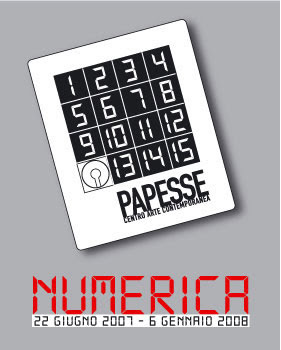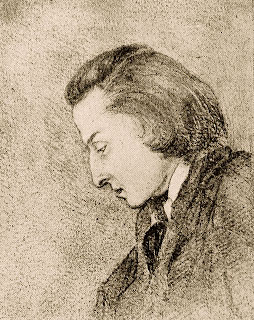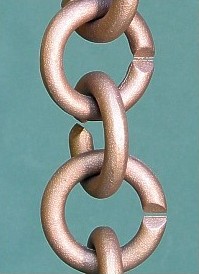Ionarts in Florence: La Valchiria
In the second half of the mini-Ring cycle mounted by La Fura dels Baus at the Teatro Comunale di Firenze, sold out in its final performance on Friday night, it felt at first like a different production. The most controversial aspect of Das Rheingold, the gold itself, was not in evidence, of course, and for the first two acts we saw what amounted to a very traditional staging of Die Walküre, in many ways aided by well-made video effects (designed by Franc Aleu). In Act I, Hunding's house had no set, but the large tree with Nothung sunk into it (featuring a large vaginal knot in its trunk) glistened behind the singers on the video screen, as a fire flickered on the scrim in front of them. As Siegmund sang of his past, the flames took the hallucinatory shape of a wolf's face, its eyes glowing as it padded toward us. The same minimalistic approach was applied in the second act, which began with the stunning effect of seeing Brünnhilde (costumed like a mini-Wotan, complete with miniature spear) soar over the orchestra on her levitating platform while she sang her first Hojotohos. As Wotan summarized the action of Das Rheingold, the visual narrative also ground to a halt, as Wotan sat forlornly on his platform, the lights became dull and colorless, and the video background ceased except for a few images of the first opera in the upper right corner of the screen.
Video of a rehearsal of Ride of the Valkyries
The acrobats of the Fura dels Baus troupe did not make an appearance until the third act, when they represented the dead warriors being gathered up during the Ride of the Valkyries. In a powerful image, they were an immobile mass of bodies, swinging back and forth on a huge globe. Some bodies lay on the stage floor, pierced with arrows like pin cushions. In the most stunning display of the cycle thus far, four of the Valkyries soared around the stage on the levitating platforms as they sang. Because the battle-maidens could be extended out over the orchestra, as well as above one another and really into our faces (we were seated this time in a side box with an excellent view), this was truly the most convincingly staged Ride of the Valkyries I have ever seen. The eight women of the group, who were also the vocally strongest Valkyries in my experience, are to be congratulated for singing this difficult music while essentially on a roller coaster ride. The ring of fire at the operas's conclusion was also fairly traditional, except that the platform on which Brünnhilde was imprisoned was supported by the bodies of La Fura dels Baus.
Video taken from the inside of the Fura dels Baus pendulum during the Ride of the Valkyries
Even more than in Das Rheingold, the cast of this production excelled on Friday night. The Act I featured the heroically voiced Siegmund of Peter Seiffert across from a superlative Petra Marie Schnitzer as Sieglinde. The only drawback was that Schnitzer seemed to have lost steam, just slightly, by the time that her Act III exclamation "O hehrstes Wunder! Herrlichste Maid!" came around. It was a nice touch to see this Sieglinde, hunched over like an animal (even restrained by a rope around her neck) in Hunding's house, able to straighten her back and walk like a human during the gorgeous love duet that ended the act. The directing, in spite of Seiffert's somewhat cheesy hair and expressions, emphasized the redemptive qualities described in Winterstürme and Du bist der Lenz. Juha Uusitalo completed an altogether impressive Wotan (the premiere of this production in Valencia was his debut in the role), combining a resonant voice (the final consonants were still overdone, but not as prominent) with a sensitive dynamic scaling and range of expression.
Anna Larsson was back, with her thigh-high boots, and brilliant in her sexual and intellectual domination of Wotan in Act II. (Fricka sexy? Yes.) There were only a few points in the role's high range where her generally low and dark voice was not well suited. Matti Salminen was reincarnated (after his Fasolt was killed on Wednesday) as a snarling and heavyweight Hunding. Jennifer Wilson was vocally in good form as Brünnhilde, although perhaps fatigue tended to color her voice toward sharpness at loud points. Most happily, after causing me some disappointment on Wednesday night, the Orchestra del Maggio Musicale Fiorentino played with magisterial authority here, like a vast creature with one mind responding to the gestures of Zubin Mehta. The sound was always scaled to the singers when necessary but had ear-crushing power, too, as well as ethereal delicacy according to the score's demands. As expected, Mehta shaped both scores with his supremely experienced sense of color and scope.
Final dress rehearsal of Die Walküre in Valencia
The Rhinegold as DNA/fetus stands out as a strange part of this staging, which overall could be described as inventive and visually diverting more than avant-garde. At this point, it is appropriate to mention that the theme of this year's Maggio Musicale Fiorentino, the 70th anniversary of this spring music festival in Florence, is Mito e Contemporaneità. Obviously, the idea of drawing a connection between the old German myths reshaped by Wagner in the Ring cycle and our own age makes perfect sense in this context. These legends are ultimately about how mankind was born and how the former age of the gods ended, and throughout the first two operas of the Fura dels Baus cycle, Wotan's dream of a new race, free from the binding contracts of his own existence, hangs in the background, in video imagery of the DNA helix and the partially formed framework of a man not yet created. Alberich's cloning of a golden army from the seed of the Rhinegold represents a violation of natural law, but it remains to see how that problem will be resolved at the end of the cycle. It is only then that we will be able to tell if this interpretation makes any sense.
The Maggio Musicale Fiorentino concludes officially this evening, with a free concerto di chiusura by the festival orchestra in Florence's Piazza della Signoria. Although Ionarts, of course, would like to hear Zubin Mehta and pianist Fazil Say's take on an all-Tchaikovsky program, there is this thing called the Palio this weekend back in Siena. We will back in Florence later this week, for two Mahler concerts with Daniel Barenboim conducting the Staatskapelle










































































